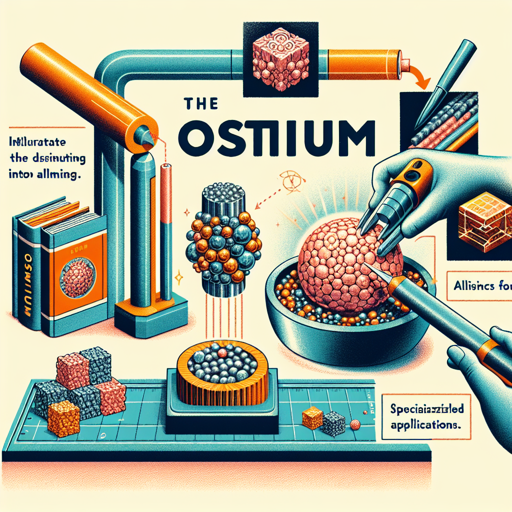Unveiling the Power of Osmium in Alloys
Discover the role of the densest naturally occurring element, osmium, in enhancing the hardness of specialized alloys.

Introduction
Deep within the heart of our planet, extraordinary processes are at work shaping powerful elements. One such element is osmium, the densest naturally occurring element on earth. This precious element, when expertly combined with others, lends its remarkable properties to create specialized alloys of unmatched hardness. This transformative power of osmium in alloys forms the crux of our exploration in this article.
Osmium: A Brief Overview
Osmium, named after the Greek word for ‘smell’, is a hard, brittle, blue-gray or blue-black transition metal in the platinum group. It is the densest naturally occurring element, with a density of 22.59 g/cm³. Found in trace amounts in nature, it is usually recovered as a by-product from the residues of nickel and copper refining.
The Role of Osmium in Alloys
Osmium’s most significant role in the world of metallurgy is its ability to enhance the hardness of alloys. It forms an integral part of specialized alloys used in high-wear applications, such as electrical contacts, fountain pen tips, instrument pivots, and other equipment where extreme hardness is required.
As the English chemist and inventor, Sir Humphry Davy once said, “Nothing tends so much to the advancement of knowledge as the application of a new instrument.” And indeed, the infusion of osmium into alloys has served as a powerful instrument in advancing our technological capabilities.
| Property | Osmium | Osmium-based Alloy |
|---|---|---|
| Density (g/cm³) | 22.59 | Varies |
| Hardness (Mohs scale) | 7.0 | 7-8 |
| Melting Point (°C) | 3033 | Varies |
The Metallurgical Magic: Osmium in Action
When osmium is alloyed with other metals such as iridium, it forms osmiridium. This alloy is twice as hard as osmium itself, showcasing the power of elemental combination. Osmiridium is chiefly used in making fountain pen tips and phonograph needles, owing to its extreme hardness and resistance to wear.
The Future of Osmium Alloys
While osmium’s toxicity and volatility at room temperature have limited its widespread use in alloys, ongoing research seeks to unlock its full potential. Scientists are exploring ways to mitigate these challenges, potentially paving the way for broader applications of osmium alloys in the future.
For more information on the fascinating world of osmium and its alloys, refer to this comprehensive resource.
Conclusion
From the depths of the earth to the tips of our pens, osmium continues to play a crucial role in enhancing the hardness of specialized alloys. Its extraordinary properties, coupled with the transformative power of alloys, offer a riveting glimpse into the dynamic world of earth sciences and metallurgy. As we continue to unravel the mysteries of this dense element, one thing is clear: the story of osmium is as compelling and complex as the element itself.